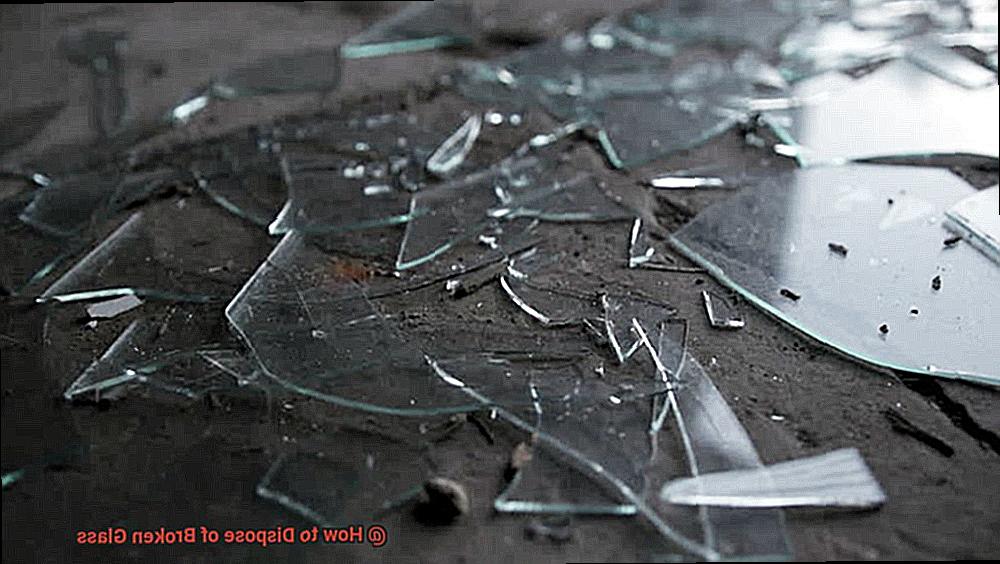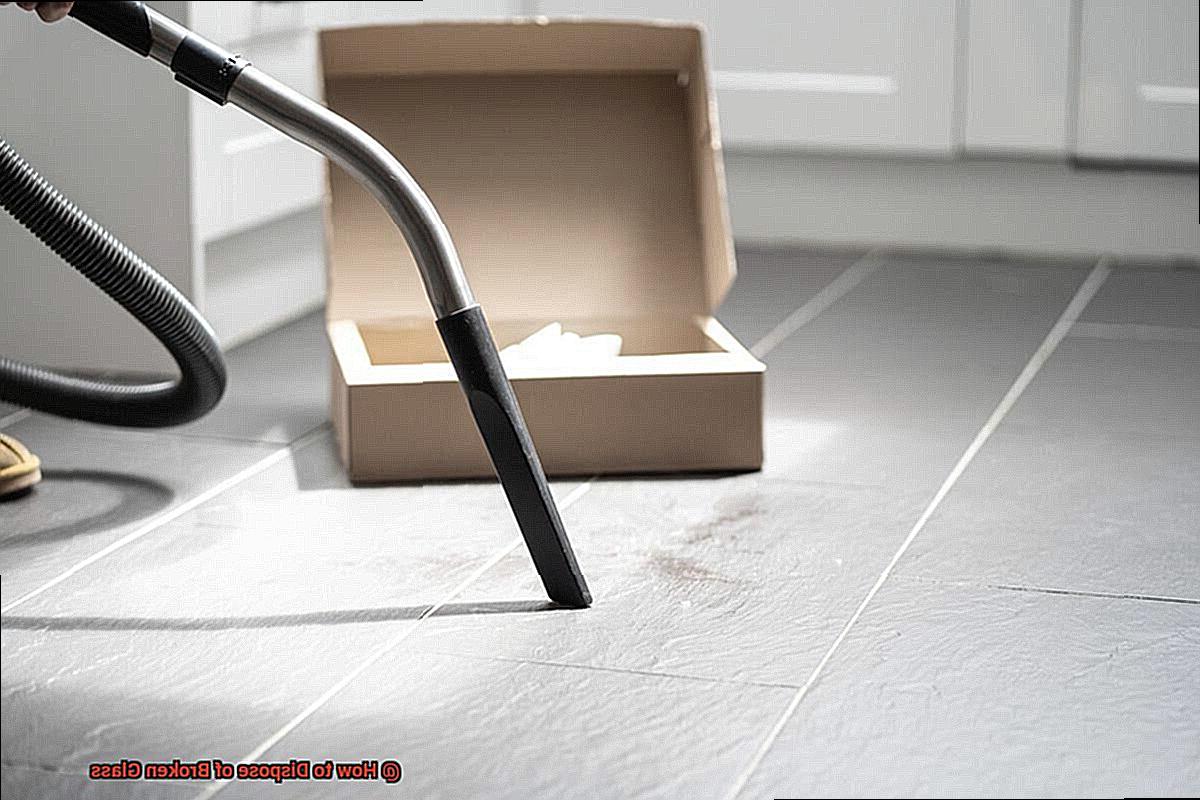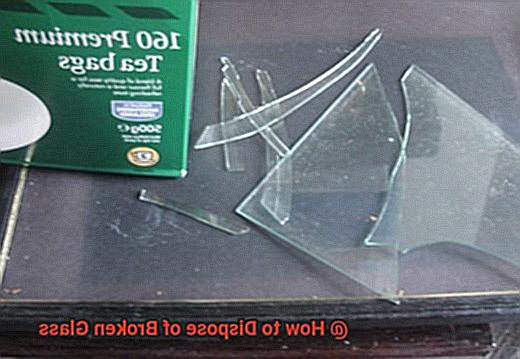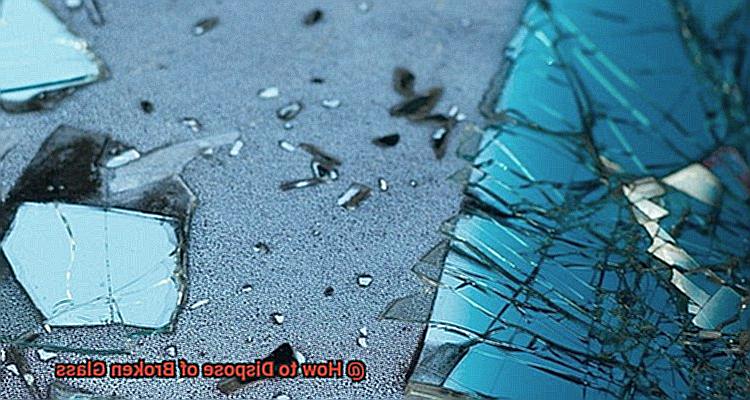If you find yourself with a mess of broken glass, don’t worry. Disposing of it safely is possible.
This blog post will show you how to properly dispose of broken glass in both residential and commercial settings.
We’ll cover the safety gear you should wear when handling it, as well as the best methods for recycling and disposing of it.
By following these steps, you can ensure that your broken glass is disposed of without putting yourself or others at risk.
So whether it’s a small shard or a huge pile of sharp shards, read on to find out what you need to know about how to safely dispose of broken glass.
Safety Precautions When Handling Broken Glass
Contents
- 1 Safety Precautions When Handling Broken Glass
- 2 What Not to Do with Broken Glass
- 3 How to Dispose of Small Pieces of Broken Glass
- 4 How to Dispose of Large Pieces of Broken Glass
- 5 How to Dispose of Broken Glass in a Lab Environment
- 6 Is it Illegal to Throw Away Glass?
- 7 How to Dispose of Broken Glass in California
- 8 How to Dispose of Broken Glass in New York City (NYC)
- 9 Improperly Dispose Broken Glass In NYC
- 10 Conclusion
When dealing with broken glass, safety should always be your top priority.
It’s like walking a tightrope – one wrong move and you’ll be in for a lifetime of pain.
To protect yourself and those around you, here are some essential safety tips for handling broken glass:
Always wear protective gloves and eye protection when dealing with broken glass.
This will help to shield your hands and eyes from any sharp objects that may be lurking around.
Clean up any pieces of glass as soon as possible to avoid any further injuries.
Use a damp cloth or paper towels to clean the area, then sweep up all of the pieces of glass and dispose of them in a sealed container or bag according to local regulations and guidelines.
Lastly, if possible, use a vacuum cleaner with a HEPA filter to collect the small pieces of glass that can be difficult to see.

What Not to Do with Broken Glass
Broken glass can be a serious hazard that requires careful attention.

If not handled properly, it can lead to severe injury.
To ensure your safety, here are some critical tips on what not to do when dealing with cracked glass.
First and foremost, never try to pick up broken glass with your bare hands.
It’s like playing a game of jacks – you never know when you’ll get stung. Instead, use a broom and dustpan, tongs or thick gloves to safely pick up the pieces and place them in a sealed container such as a plastic jar or can.
Do not throw broken glass in the regular trash – it could puncture the bag and cause harm.
And don’t dispose of broken glass in a sink or toilet; it will clog pipes and create an even greater mess. In addition, avoid putting broken glass into paper bags or cardboard boxes since these materials are too thin to contain the shards adequately.
Finally, never leave shattered glass lying around for others to find.
Even if it’s out of sight, it can still be a danger. Make sure you store all glass containers safely away from children and pets until they can be disposed of correctly.

How to Dispose of Small Pieces of Broken Glass
Broken glass can be a hazard, so it’s important to know how to dispose of it safely.
Whether you have a few small pieces or large ones, there are several ways to ensure the glass is disposed of properly.
Let’s take a look at some key steps for disposing of broken glass.
Sweep It Up
One way to collect small pieces of broken glass is to use a dustpan and brush.
Be careful when sweeping up the shards so they don’t scatter around.
Empty the contents into an appropriate container with a lid, such as a plastic bag or box.
Make sure the container is securely sealed so that no one is injured by coming into contact with the shards.
Vacuum It Up
Vacuuming small pieces of broken glass can be effective, but make sure your vacuum cleaner has been specifically designed for this purpose.
If possible, use an attachment on the vacuum cleaner that was designed for picking up small objects such as glass shards.
Contain It
If you have large amounts of broken glass, contact your local waste management department for advice on how to safely dispose of it.
Special containers may be available in some areas for safe disposal.
Alternatively, you can use a metal or plastic container with a lid to store and transport the shards until they can be disposed of properly.
By following these steps and using appropriate containers and equipment, disposing of small pieces of broken glass doesn’t have to be difficult or dangerous.
How to Dispose of Large Pieces of Broken Glass
Handling Broken Glass – Dealing with large pieces of broken glass is a potentially dangerous task that should never be taken lightly.
To ensure safety, it is essential to wear protective gloves and clothing when handling the glass.
The best way to dispose of large pieces of broken glass is to wrap them in a thick newspaper or cloth and place them in a sealed container before transporting them to a designated recycling center or hazardous waste facility.
Proper Disposal
Properly disposing of large pieces of broken glass is both essential for your safety and the safety of those around you.
You can help keep your neighborhood safe from potential hazards caused by broken glass by following the instructions from your local waste management agency for proper disposal.
Additionally, disposing of large pieces of broken glass in the right way can help minimize waste and conserve resources, as most cities now require you to take the glass to a designated recycling center or hazardous waste facility.
Labeling Large Pieces
If the glass is from a lab or other professional setting, it should be labeled appropriately before being disposed of.
This will help ensure that they are properly handled and disposed of, as well as make it possible for waste disposal companies to identify the type of waste being handled and give any additional information on how to properly dispose it safely and responsibly.
Containers for Safe Disposal
When disposing large pieces of broken glass, make sure the container used for storage is securely sealed and labeled “Broken Glass” so no one will mistakenly open it up and put themselves at risk due to sharp edges or other hazards associated with handling broken glass shards.
It is also best practice to place the broken glass in a separate container from other garbage so there is no chance of contamination or confusion when disposing it at a designated facility such as a recycling center or hazardous waste collection site.
Paying Fees for Proper Disposal
In some cases, you may have to pay a fee in order for your local waste disposal service to properly dispose your large pieces of broken glass at an appropriate location such as a recycling center or hazardous waste collection site.
How to Dispose of Broken Glass in a Lab Environment
Safety is paramount when disposing of broken glass in a lab environment.
All personnel should be equipped with safety glasses, gloves, and face shields to protect themselves from any potential injuries.
Once the broken glass has been collected, it should be placed in a secure, puncture-proof container with a lid and labeled “Broken Glass”.
It is important to follow local waste disposal regulations when disposing of broken glass in a lab environment.
Depending on the type of glass, it may be necessary to contact the local hazardous waste management agency for further instructions on how to safely and legally dispose of broken glass.
Contain Broken Glass
When disposing of broken glass in a lab environment, it is essential that all pieces are contained securely.
The container or bin used should be strong and puncture-proof so that no one can accidentally cut themselves while handling it.
For added safety measures, make sure to label the container as “Broken Glass” so everyone knows what is inside and takes extra precaution when handling it.
Think about putting on armor before going into combat – you want to make sure you have all your protective gear on before starting any dangerous job.
Local Waste Disposal Guidelines
Before disposing of any broken glass in a lab environment, make sure you are aware of your local waste disposal regulations and follow them closely.
In some cases, it may be necessary to contact the local hazardous waste management department for additional information on how to properly dispose broken glass according to state laws and regulations.
Failing to do so could result in hefty fines or even jail time depending on the severity of the violation.
Contact Your Local Hazardous Waste Management Agency
If you’re unsure about how to dispose of certain types of broken glass, then contacting your local hazardous waste disposal company could be your best bet for finding accurate information on the right disposal techniques for those materials.
They’ll be able to provide detailed information on how exactly each type of substance should be disposed of safely and legally without causing injury or harm yourself or the environment around you.
Never Attempt To Clean Up Broken Glass Without Protective Gear
No matter how small or insignificant a piece of glass is broken, never attempt to clean up without wearing protective gear because doing so can result in serious injury or even death.
Is it Illegal to Throw Away Glass?
It’s essential to know the laws when it comes to disposing of glass.
In most places, throwing away glass is illegal.
Different states have different regulations regarding broken glass disposal, so it’s important to check with local ordinances before discarding any pieces.
In some areas, it’s illegal to put broken glass in the regular trash and must instead be taken to a recycling center.
This helps reduce waste and conserve resources.
Additionally, many states have laws prohibiting the disposal of hazardous materials, including broken glass, in residential garbage.
Dealing with glass can be tricky but there are ways to dispose of it safely.
How to Dispose of Broken Glass in California
Broken glass is a hazard to people, animals, and the environment, so it’s important to know how to safely and correctly dispose of it in California.

Here are some tips for disposing of broken glass effectively.
The California Code of Regulations outlines specific regulations for disposing of broken glass.
All broken glass must be placed in a sealed, puncture-resistant container and clearly labeled with the words “Broken Glass” or “Glass Shards” along with a warning label indicating potential injury from the glass shards.
It’s also important to remember that broken glass should not be thrown into regular household trash because it can cause injury to sanitation workers and contaminate other materials in the garbage.
Broken glass should be taken to a hazardous waste drop-off site or an authorized recycler that accepts broken glass for recycling in California.
Some cities also offer curbside pickup of broken glass containers, but this service may vary depending on location and availability.
When handling broken glass, make sure you wear protective gloves and eye protection as even a knight in shining armor can suffer serious injuries if mishandled.
How to Dispose of Broken Glass in New York City (NYC)
Breaking glass is an unavoidable part of life, and disposing of it properly is essential in order to keep NYC safe and tidy.
Fortunately, the NYC Department of Sanitation has specific guidelines on how to dispose of broken glass.
All broken glass should be placed in a sealed container before being disposed, as it is illegal to throw away broken glass as it can be hazardous to the environment.
Residents of NYC can contact their local sanitation department for more information on how to properly dispose of broken glass or take it to a designated drop-off location for disposal.
These locations usually require proof of residency and may charge a fee for disposal.
If you live in an apartment building, you may need to contact your building manager or superintendent for instructions on how to dispose of broken glass.
Recycling Broken Glass in New York City
Recycling broken glass is always the best option. Several recycling centers are located throughout NYC and accept broken glass for recycling purposes.
Before taking your broken glass to the recycling center, make sure you have wrapped it tightly in newspaper or other absorbent material before placing it in a plastic bag; this will help keep everyone safe during transport and handling. Once at the recycling center, you can rest assured that your broken glass will be recycled into something new instead of being sent off to landfill sites, where environmental risks could be present.
Businesses and Labs
Businesses and labs that produce a lot of glass must take extra care when disposing this waste.
The Department of Environmental Protection should be contacted for proper disposal procedures as they have stringent guidelines that must be followed when disposing any kind of hazardous waste products, including broken glass..
Businesses must ensure that all containers used for storing and transporting these products are safe and leak-proof so as not to cause any harm during transport or handling.
Taking these additional measures will help keep businesses compliant with the legislation while also shielding our environment from potential damage caused by improperly disposing hazardous materials, such as broken glass.
Improperly Dispose Broken Glass In NYC
Broken glass is one of the few things that should never be taken lightly when disposing. Not only is throwing away broken glass illegal due its potential environmental risks, but it can also result in serious injury if not treated properly.
Even small pieces can become sharp enough over time if left outside; shattered windows or bottles can quickly result in cuts if not wrapped tightly before being placed in containers for recycling or disposal.
Conclusion
When it comes to disposing of broken glass, safety is paramount.
Wear protective gloves and eye protection at all times to shield yourself from any sharp objects lurking around.
Clean up pieces of glass as soon as possible and dispose of them in a sealed container or bag according to local ordinances and guidelines.
In New York City (NYC), it is unlawful to throw away broken glass due to potential environmental risks, so businesses must contact the Department of Environmental Protection for proper disposal techniques.
By following these instructions and using appropriate containers and equipment, we can help keep our environment safe while minimizing injuries caused by mishandling this dangerous material.





